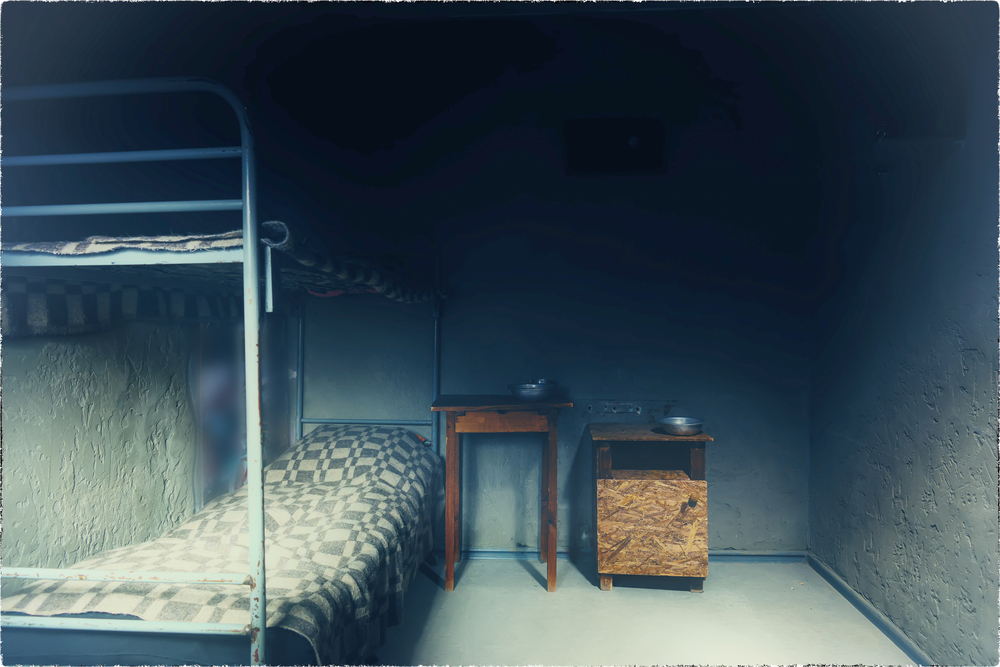![]() California is in the midst of an unprecedented shrinking of its juvenile justice system. Over the past several decades, youth arrests have fallen precipitously, driving down court and probation caseloads and emptying juvenile facilities. Yet California taxpayers continue to foot the bill for two overbuilt and over-resourced systems for confining youth: one operated by the state and the other by counties. In 2018, California’s state correctional system for youth, the Division of Juvenile Justice (DJJ), reported a population that was just 40% of the facilities’ capacity, while county-run juvenile halls, camps and ranches were just under 30% full.
California is in the midst of an unprecedented shrinking of its juvenile justice system. Over the past several decades, youth arrests have fallen precipitously, driving down court and probation caseloads and emptying juvenile facilities. Yet California taxpayers continue to foot the bill for two overbuilt and over-resourced systems for confining youth: one operated by the state and the other by counties. In 2018, California’s state correctional system for youth, the Division of Juvenile Justice (DJJ), reported a population that was just 40% of the facilities’ capacity, while county-run juvenile halls, camps and ranches were just under 30% full.
For more information on Community-Based Alternatives, go to JJIE Resource Hub | Community-Based Alternatives
Many local justice systems have been slow to respond to broader trends in juvenile justice and even slower to acknowledge modern best practices. We now know that youth are better served in small, close-to-home settings that can maintain safety and preserve connections to family and supportive community members. However, a number of California counties continue to send large numbers of young people to the state system, subjecting them to its high rate of recidivism and poor record for keeping youth safe.

Maureen Washburn
These state-dependent jurisdictions pay just a fraction of the heavily subsidized cost of DJJ while also receiving substantial state funding to serve youth locally. One such county, Riverside, sends youth to DJJ at roughly twice the rate of the rest of California despite receiving $15.5 million through the annual Juvenile Justice Crime Prevention Act and Youthful Offender Block Grant — programs that are designed to enhance treatment and services for youth at the local level. The county had also recently accepted nearly $25 million in state financing to construct a brand new juvenile facility that opened in 2017 and is housing just 30 youth, or 28%, of its design capacity.
“Justice by geography” is an ongoing issue in California’s juvenile justice system that subjects young people to vastly different outcomes depending on where they live. Geographic disparities are even more pronounced when paired with financial incentives. California currently requires counties to pay just 8% of the per capita price of DJJ, or $24,000 per youth. This is far less than the cost of placing a young person in a local facility. This creates a problematic incentive that motivates some counties to rely on the state rather than invest in their own local systems.
Differences by county
The resulting disparities are stark: The 10 counties that rely most heavily on the state system account for 27% of all youth at DJJ despite the fact that they make up just 14% of California’s youth population (ages 10-17) and 11% of its juvenile arrests for violent felonies. Meanwhile, 19 of California’s 58 counties do not send any youth to DJJ and 17 send five or fewer.
These differences cut across regions and often reflect the priorities of county decision-makers. For example, youth in Contra Costa County in 2017 were 3.5 times more likely to be sent to DJJ than youth in neighboring Alameda County. Alameda County also detained or confined far fewer youth (per felony arrest) in its local juvenile hall and camp programs.
Many of the California counties that remain self-reliant in the face of this financial incentive have made deliberate investments in alternatives. Yet these jurisdictions must continue to share in the high cost of DJJ. Because counties are required to compensate the state for just a fraction of DJJ’s $300,000 per youth cost, state taxpayers must contribute the rest, which places an unfair burden on the residents of jurisdictions that have already halted or reduced commitments to the state system.
Unfortunately, the true cost of the DJJ system and the burden of California’s current fee structure is shouldered primarily by young people and their families. Youth who are placed by their counties in the DJJ facilities are exposed to high rates of violence, disorienting isolation from loved ones and poor preparation for their return home.
At a recent hearing on DJJ, Elijah, a young man who was recently released from the facilities, described the challenges of remaining connected to his family while being held more than a hundred miles from home: “I have a close relationship with my family … they have always been the ones I turn to for guidance and support. However, being at DJJ faltered our once sturdy relationship … I was completely isolated from the outside world in such a remote location.” Elijah was placed in DJJ by Monterey County, one of California’s most state-dependent jurisdictions.
What other states do
Thanks to the advocacy of Elijah and others, California may soon act to reverse the incentive driving counties to commit youth to its state facilities. A coalition of community-based, youth-serving organizations are spearheading Senate Bill 284, a measure that would increase the fee counties pay for future commitments to DJJ with the goal of curbing “justice by geography” and bringing youth closer to home. The bill, introduced in February by state Sen. Jim Beall, would charge counties $125,000 per year for each youth placed in the state DJJ facilities. It has received bipartisan support and will go to a vote on the state’s Assembly Floor in the coming weeks.
SB 284 builds on existing models throughout the U.S. that employ financial incentives to keep youth closer to home. In recent years, a number of states have given local governments a greater stake in developing their own alternatives to state institutions. In Wisconsin, the Youth Aids program requires counties to pay the full cost for each youth committed to the state system for certain offenses. Pennsylvania’s Act 148 creates an incentive for less restrictive placements by reimbursing counties for juvenile justice services along a sliding scale, with nearly full reimbursement for non-confinement settings.
In Ohio, the Reasoned and Equitable Community and Local Alternatives to the Incarceration of Minors (RECLAIM) program awards courts a certain number of credits based on felony adjudications, then deducts them for any youth placed in state facilities. Similarly, Redeploy Illinois provides an incentive for participating counties and courts to reduce the number of youth committed to the state system and imposes penalties on sites that fail to meet population reduction targets.
Across the U.S., juvenile justice systems are confronting rapid declines in youth arrests and a growing recognition that separating youth from family members and trusted adults creates lasting harm. Financial incentives are a useful tool in prompting counties to take greater responsibility for the treatment and care of young people and reduce reliance on distant state institutions. In California, SB 284 presents lawmakers with an opportunity to address geographic disparities and boost local invocation by encouraging counties to bring youth back home.
Maureen Washburn is a member of the policy and communications team at the Center on Juvenile and Criminal Justice.
